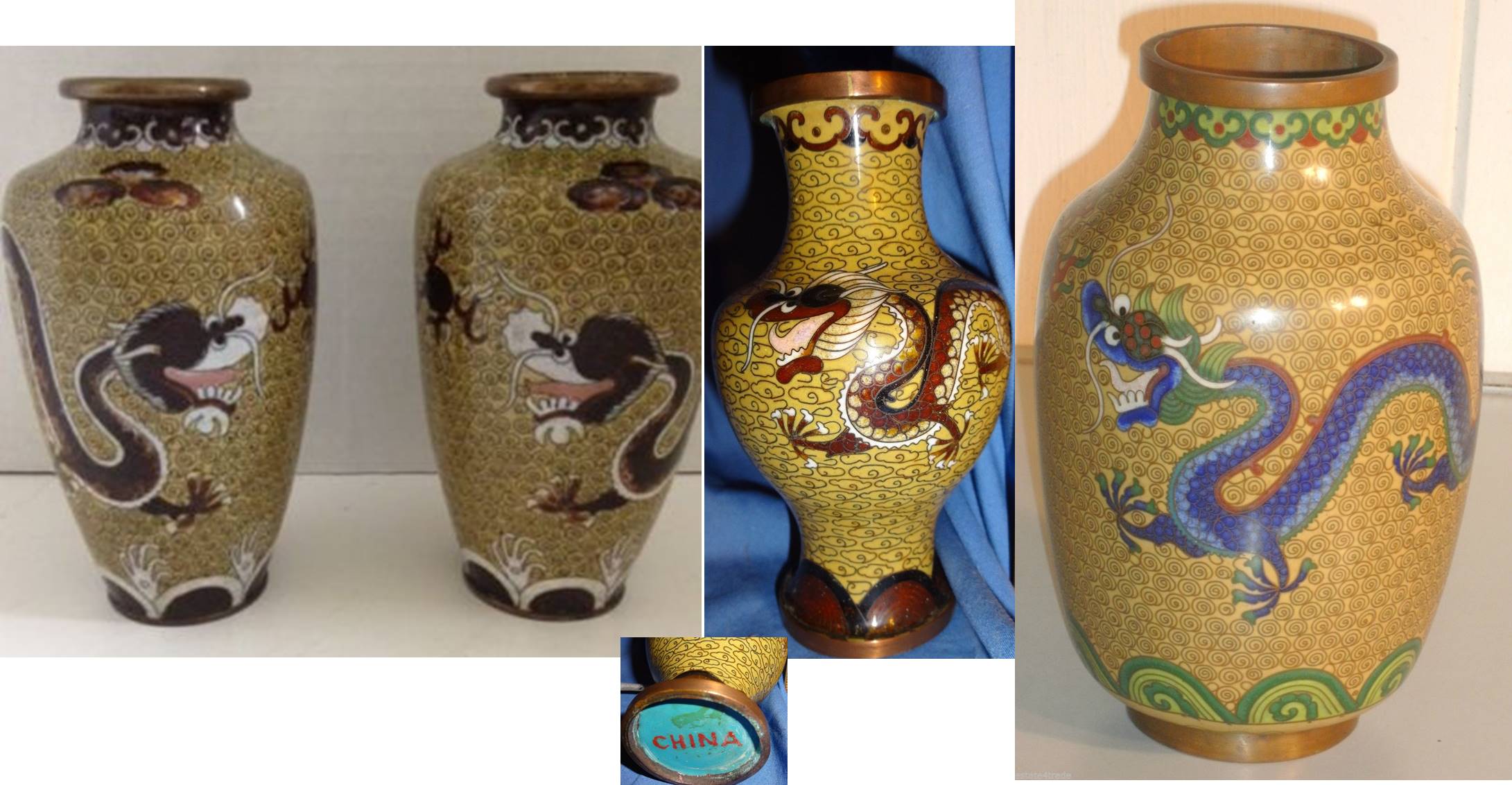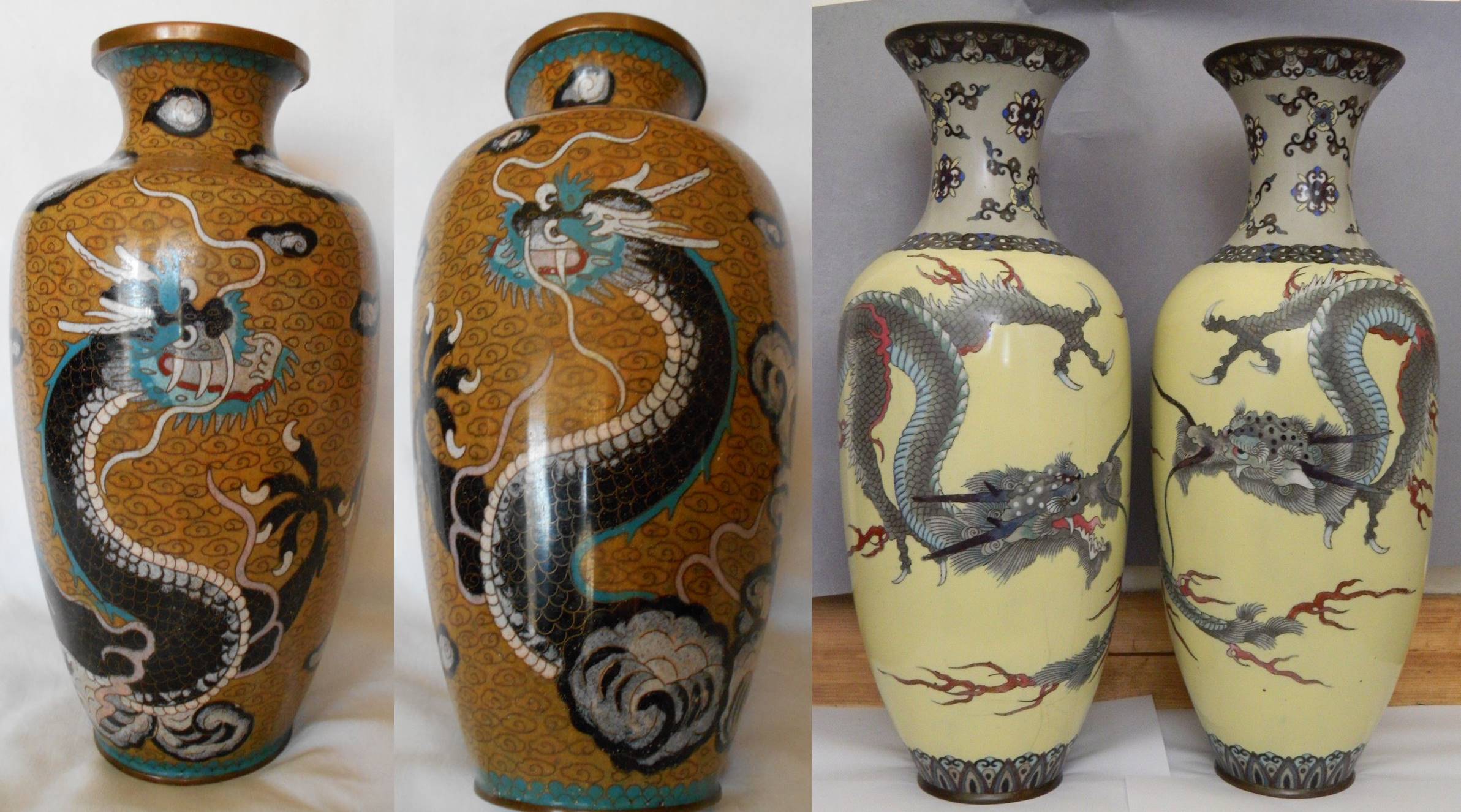
|
Subject:A Chinese closonne vase gifted from 武徳報社 in Beijiang China in 1946
Posted By: Super Mon, Nov 02, 2015
Please understand that I do not know how to read Japanese either and therefore anything I post here can indeed be inaccurate(if they were indeed Japanese) and therefore by no means any of my postings here are intended to be disrespects to the other two posters.
First of all, I believe the third character from the left of "贈 工勝先生", is 藤 instead of 勝. Therefore it may be translated as "Gifted to Mr. Kudo 工藤".
Secondly, I believe instead of Showa Year 30 (1956) it appears to me it may be Showa Year 20 (1946) instead. The date is indeed Jan. 5th, 1946, right after the Japanese surrender on Sept. 2, 1945. (*Please correct me if I am wrong)
Thirdly, 武徳報社, while the first two characters may indeed sound like having something to do with the virtues of martial arts (may be it did), however 報社 means a newspaper publisher and 武徳 is the name of this newspaper publisher. If you would google 武徳報社, one would learn that after the Japanese had occupied Beijiang, China in 1940, there was a cartoon publisher named 武徳報社 in Beijiang, China, apparently under the direct supervision of the Japanese military, which had been publishing the "Beijiang Cartoons" or "Beijiang Manhua" 北京漫画 since 1940.
http://mitizane.ll.chiba-u.jp/metadb/up/BA31027730/2012no.250_58_75.pdf
http://mitizane.ll.chiba-u.jp/metadb/up/BA31027730/2010no.207_44_58.pdf
All these made me believe that while the person to whom this vase was gifted was indeed a Japanese, probably somebody who had something to do with the "Beijian Manhua" magazine, however I believe the carvings were possibly being carved in Chinese and the vase was made in Beijiang, China at around 1946. Of course, I can be wrong and would stand corrected if that is indeed the case.
Again, no pun intended. Hope this helps.
Super


|
 Inscription on Cloisonne Dragon Vase
Inscription on Cloisonne Dragon Vase  ( China & Japan ) - beadiste - Oct 31, 2015 (10:32 PM)
( China & Japan ) - beadiste - Oct 31, 2015 (10:32 PM)  Re: Inscription on Cloisonne Dragon Vase - Bill H - Nov 01, 2015 (01:10 AM)
Re: Inscription on Cloisonne Dragon Vase - Bill H - Nov 01, 2015 (01:10 AM)  Thanks - what about Taiwan, do you suppose? - beadiste - Nov 02, 2015 (01:44 AM)
Thanks - what about Taiwan, do you suppose? - beadiste - Nov 02, 2015 (01:44 AM)  Re: Thanks - what about Taiwan, do you suppose? - rat - Nov 02, 2015 (07:32 PM)
Re: Thanks - what about Taiwan, do you suppose? - rat - Nov 02, 2015 (07:32 PM)  Re: Thanks - what about Taiwan, do you suppose? - rat - Nov 03, 2015 (09:59 AM)
Re: Thanks - what about Taiwan, do you suppose? - rat - Nov 03, 2015 (09:59 AM)  A Chinese closonne vase gifted from 武徳報社 in Beijiang China in 1946 - Super - Nov 02, 2015 (04:50 PM)
A Chinese closonne vase gifted from 武徳報社 in Beijiang China in 1946 - Super - Nov 02, 2015 (04:50 PM)  Re: A Chinese closonne vase gifted from 武徳報社 in Beijiang China in 1946 - Bill H - Nov 09, 2015 (02:29 AM)
Re: A Chinese closonne vase gifted from 武徳報社 in Beijiang China in 1946 - Bill H - Nov 09, 2015 (02:29 AM)  Re: A Chinese closonne vase gifted from 武徳報社 in Beijiang China in 1946 - Super - Nov 10, 2015 (10:34 PM)
Re: A Chinese closonne vase gifted from 武徳報社 in Beijiang China in 1946 - Super - Nov 10, 2015 (10:34 PM)  In support of super's hypothesis
In support of super's hypothesis  - beadiste - Nov 03, 2015 (01:58 PM)
- beadiste - Nov 03, 2015 (01:58 PM) 




